Yusuke Uchida
2.5D U-Net with Depth Reduction for 3D CryoET Object Identification
Feb 19, 2025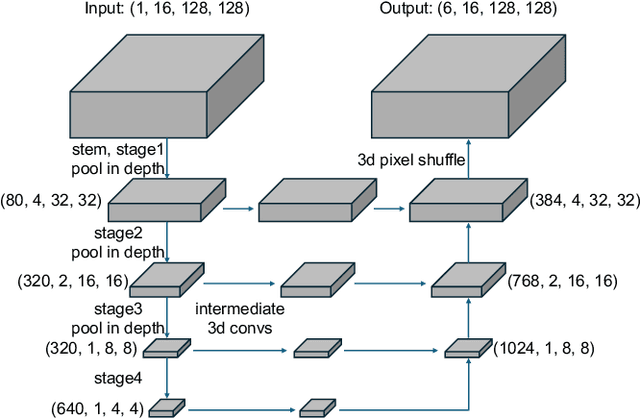
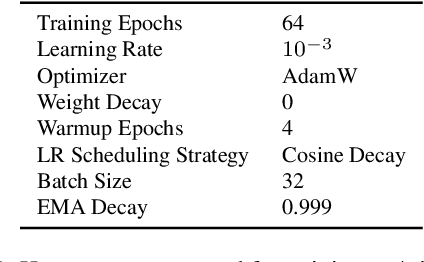
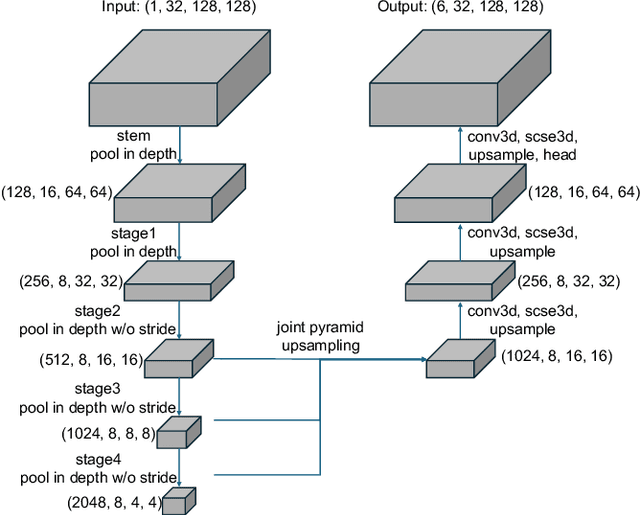
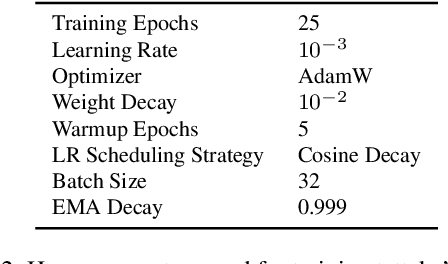
Abstract:Cryo-electron tomography (cryoET) is a crucial technique for unveiling the structure of protein complexes. Automatically analyzing tomograms captured by cryoET is an essential step toward understanding cellular structures. In this paper, we introduce the 4th place solution from the CZII - CryoET Object Identification competition, which was organized to advance the development of automated tomogram analysis techniques. Our solution adopted a heatmap-based keypoint detection approach, utilizing an ensemble of two different types of 2.5D U-Net models with depth reduction. Despite its highly unified and simple architecture, our method achieved 4th place, demonstrating its effectiveness.
CLRerNet: Improving Confidence of Lane Detection with LaneIoU
May 15, 2023



Abstract:Lane marker detection is a crucial component of the autonomous driving and driver assistance systems. Modern deep lane detection methods with row-based lane representation exhibit excellent performance on lane detection benchmarks. Through preliminary oracle experiments, we firstly disentangle the lane representation components to determine the direction of our approach. We show that correct lane positions are already among the predictions of an existing row-based detector, and the confidence scores that accurately represent intersection-over-union (IoU) with ground truths are the most beneficial. Based on the finding, we propose LaneIoU that better correlates with the metric, by taking the local lane angles into consideration. We develop a novel detector coined CLRerNet featuring LaneIoU for the target assignment cost and loss functions aiming at the improved quality of confidence scores. Through careful and fair benchmark including cross validation, we demonstrate that CLRerNet outperforms the state-of-the-art by a large margin - enjoying F1 score of 81.43% compared with 80.47% of the existing method on CULane, and 86.47% compared with 86.10% on CurveLanes.
End-to-End Monocular Vanishing Point Detection Exploiting Lane Annotations
Aug 31, 2021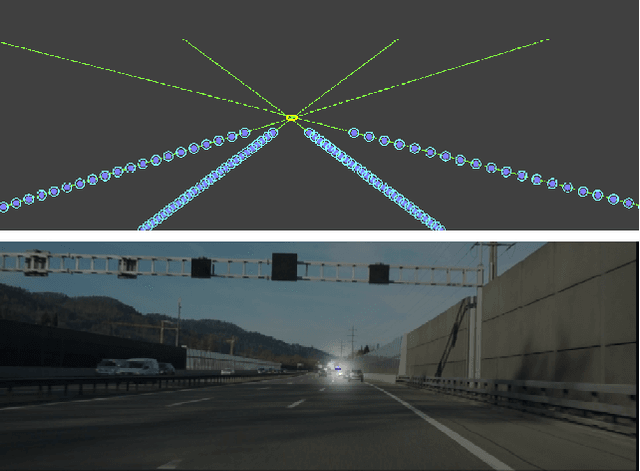
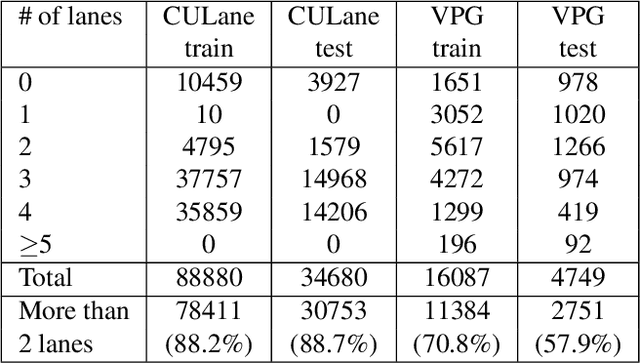
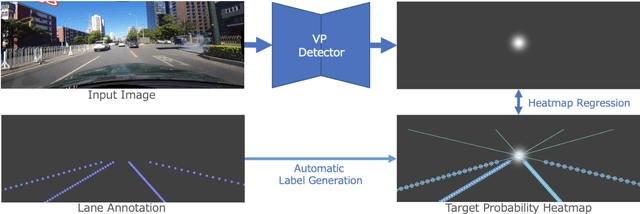
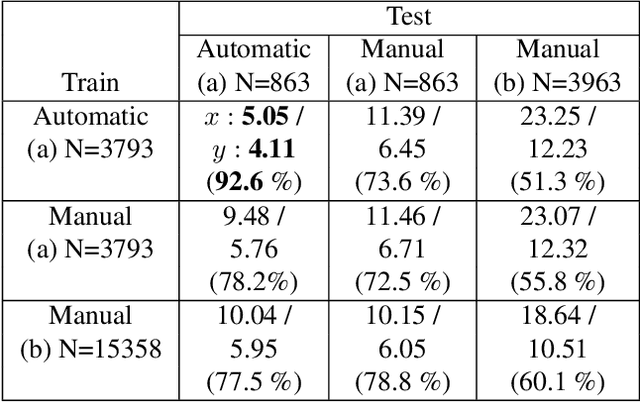
Abstract:Vanishing points (VPs) play a vital role in various computer vision tasks, especially for recognizing the 3D scenes from an image. In the real-world scenario of automobile applications, it is costly to manually obtain the external camera parameters when the camera is attached to the vehicle or the attachment is accidentally perturbed. In this paper we introduce a simple but effective end-to-end vanishing point detection. By automatically calculating intersection of the extrapolated lane marker annotations, we obtain geometrically consistent VP labels and mitigate human annotation errors caused by manual VP labeling. With the calculated VP labels we train end-to-end VP Detector via heatmap estimation. The VP Detector realizes higher accuracy than the methods utilizing manual annotation or lane detection, paving the way for accurate online camera calibration.
Prediction of Lane Number Using Results From Lane Detection
Dec 04, 2020
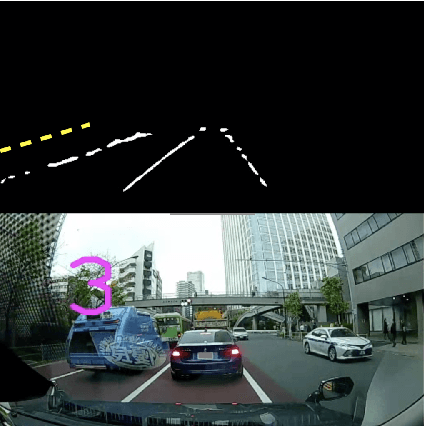
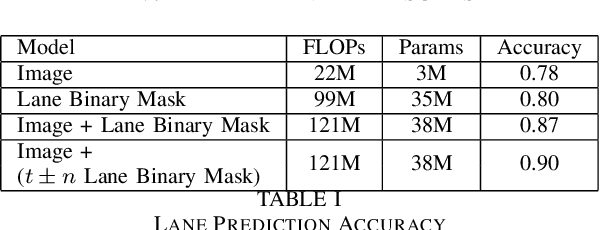
Abstract:The lane number that the vehicle is traveling in is a key factor in intelligent vehicle fields. Many lane detection algorithms were proposed and if we can perfectly detect the lanes, we can directly calculate the lane number from the lane detection results. However, in fact, lane detection algorithms sometimes underperform. Therefore, we propose a new approach for predicting the lane number, where we combine the drive recorder image with the lane detection results to predict the lane number. Experiments on our own dataset confirmed that our approach delivered outstanding results without significantly increasing computational cost.
Leveraging Temporal Joint Depths for Improving 3D Human Pose Estimation in Video
Nov 04, 2020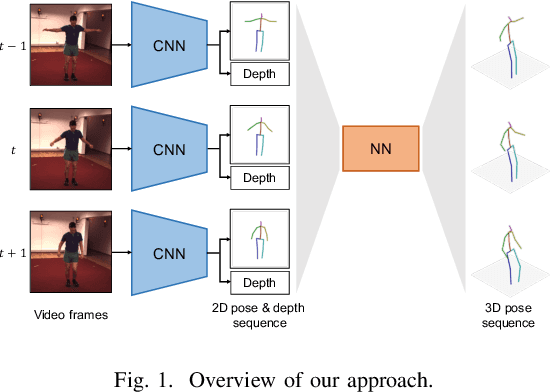
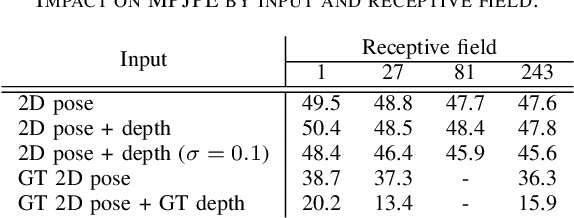
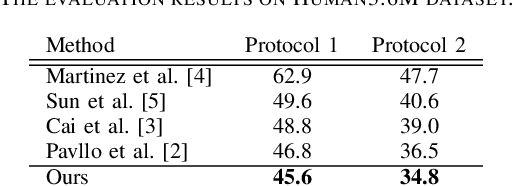
Abstract:The effectiveness of the approaches to predict 3D poses from 2D poses estimated in each frame of a video has been demonstrated for 3D human pose estimation. However, 2D poses without appearance information of persons have much ambiguity with respect to the joint depths. In this paper, we propose to estimate a 3D pose in each frame of a video and refine it considering temporal information. The proposed approach reduces the ambiguity of the joint depths and improves the 3D pose estimation accuracy.
Improving Multi-Person Pose Estimation using Label Correction
Nov 08, 2018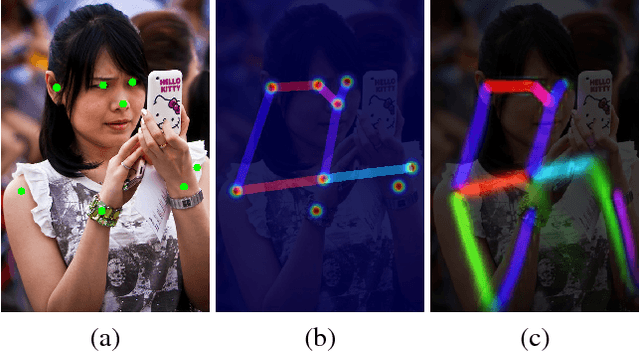
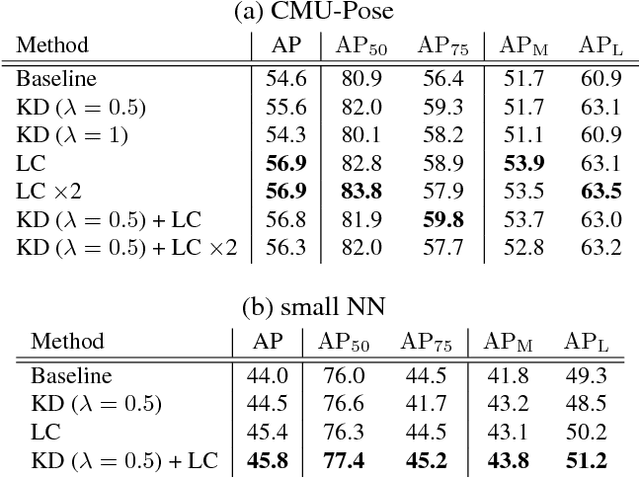


Abstract:Significant attention is being paid to multi-person pose estimation methods recently, as there has been rapid progress in the field owing to convolutional neural networks. Especially, recent method which exploits part confidence maps and Part Affinity Fields (PAFs) has achieved accurate real-time prediction of multi-person keypoints. However, human annotated labels are sometimes inappropriate for learning models. For example, if there is a limb that extends outside an image, a keypoint for the limb may not have annotations because it exists outside of the image, and thus the labels for the limb can not be generated. If a model is trained with data including such missing labels, the output of the model for the location, even though it is correct, is penalized as a false positive, which is likely to cause negative effects on the performance of the model. In this paper, we point out the existence of some patterns of inappropriate labels, and propose a novel method for correcting such labels with a teacher model trained on such incomplete data. Experiments on the COCO dataset show that training with the corrected labels improves the performance of the model and also speeds up training.
Full-body High-resolution Anime Generation with Progressive Structure-conditional Generative Adversarial Networks
Sep 06, 2018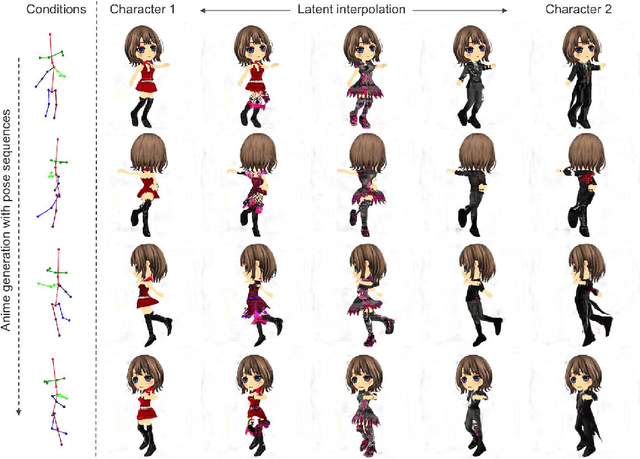
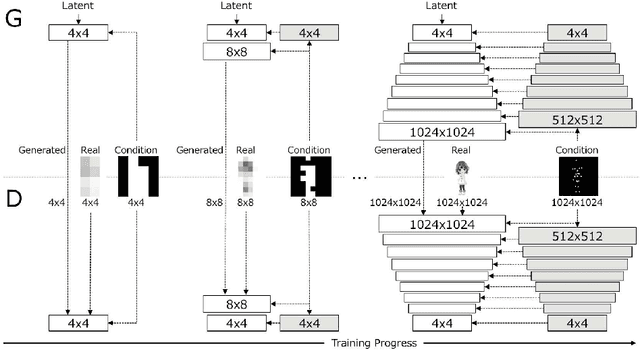


Abstract:We propose Progressive Structure-conditional Generative Adversarial Networks (PSGAN), a new framework that can generate full-body and high-resolution character images based on structural information. Recent progress in generative adversarial networks with progressive training has made it possible to generate high-resolution images. However, existing approaches have limitations in achieving both high image quality and structural consistency at the same time. Our method tackles the limitations by progressively increasing the resolution of both generated images and structural conditions during training. In this paper, we empirically demonstrate the effectiveness of this method by showing the comparison with existing approaches and video generation results of diverse anime characters at 1024x1024 based on target pose sequences. We also create a novel dataset containing full-body 1024x1024 high-resolution images and exact 2D pose keypoints using Unity 3D Avatar models.
Digital Watermarking for Deep Neural Networks
Feb 06, 2018
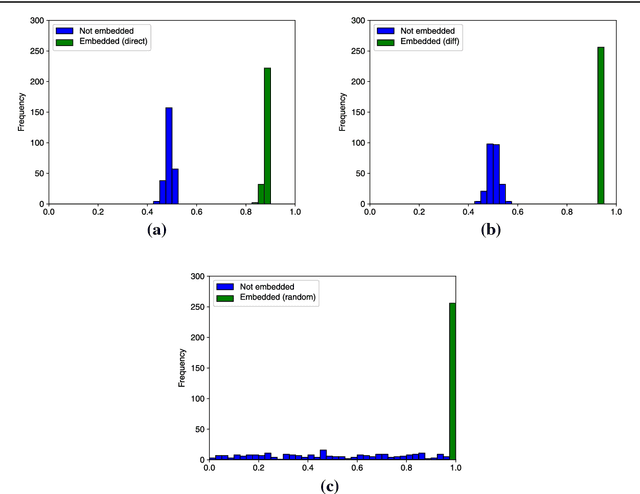
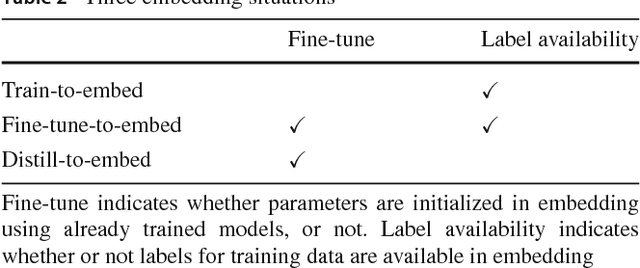
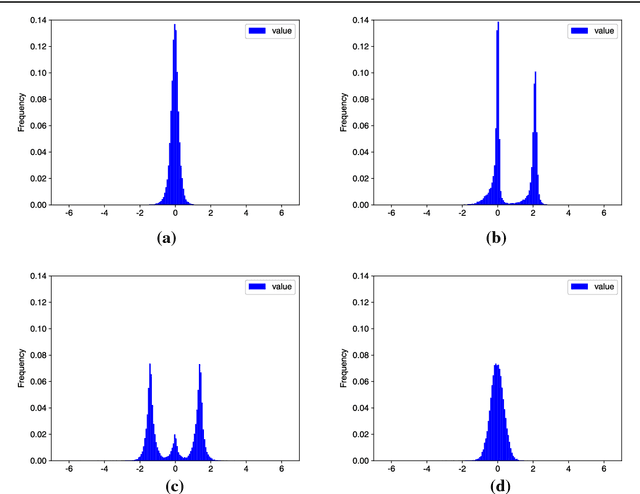
Abstract:Although deep neural networks have made tremendous progress in the area of multimedia representation, training neural models requires a large amount of data and time. It is well-known that utilizing trained models as initial weights often achieves lower training error than neural networks that are not pre-trained. A fine-tuning step helps to reduce both the computational cost and improve performance. Therefore, sharing trained models has been very important for the rapid progress of research and development. In addition, trained models could be important assets for the owner(s) who trained them, hence we regard trained models as intellectual property. In this paper, we propose a digital watermarking technology for ownership authorization of deep neural networks. First, we formulate a new problem: embedding watermarks into deep neural networks. We also define requirements, embedding situations, and attack types on watermarking in deep neural networks. Second, we propose a general framework for embedding a watermark in model parameters, using a parameter regularizer. Our approach does not impair the performance of networks into which a watermark is placed because the watermark is embedded while training the host network. Finally, we perform comprehensive experiments to reveal the potential of watermarking deep neural networks as the basis of this new research effort. We show that our framework can embed a watermark during the training of a deep neural network from scratch, and during fine-tuning and distilling, without impairing its performance. The embedded watermark does not disappear even after fine-tuning or parameter pruning; the watermark remains complete even after 65% of parameters are pruned.
Embedding Watermarks into Deep Neural Networks
Apr 20, 2017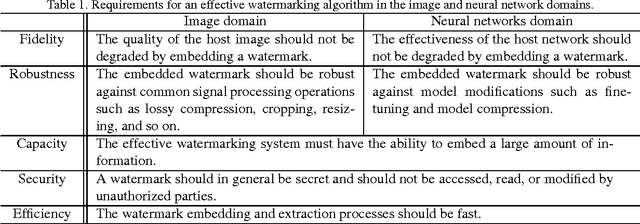
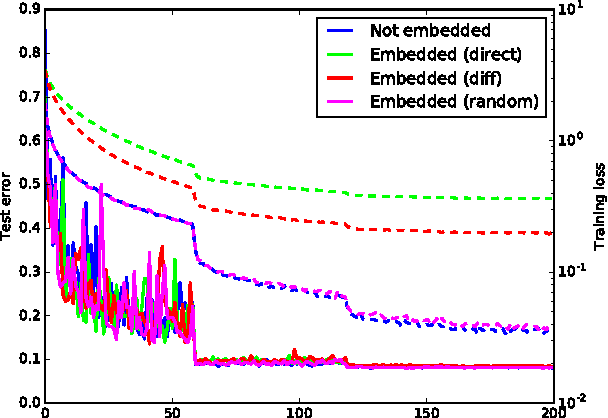


Abstract:Deep neural networks have recently achieved significant progress. Sharing trained models of these deep neural networks is very important in the rapid progress of researching or developing deep neural network systems. At the same time, it is necessary to protect the rights of shared trained models. To this end, we propose to use a digital watermarking technology to protect intellectual property or detect intellectual property infringement of trained models. Firstly, we formulate a new problem: embedding watermarks into deep neural networks. We also define requirements, embedding situations, and attack types for watermarking to deep neural networks. Secondly, we propose a general framework to embed a watermark into model parameters using a parameter regularizer. Our approach does not hurt the performance of networks into which a watermark is embedded. Finally, we perform comprehensive experiments to reveal the potential of watermarking to deep neural networks as a basis of this new problem. We show that our framework can embed a watermark in the situations of training a network from scratch, fine-tuning, and distilling without hurting the performance of a deep neural network. The embedded watermark does not disappear even after fine-tuning or parameter pruning; the watermark completely remains even after removing 65% of parameters were pruned. The implementation of this research is: https://github.com/yu4u/dnn-watermark
Adaptive Substring Extraction and Modified Local NBNN Scoring for Binary Feature-based Local Mobile Visual Search without False Positives
Oct 20, 2016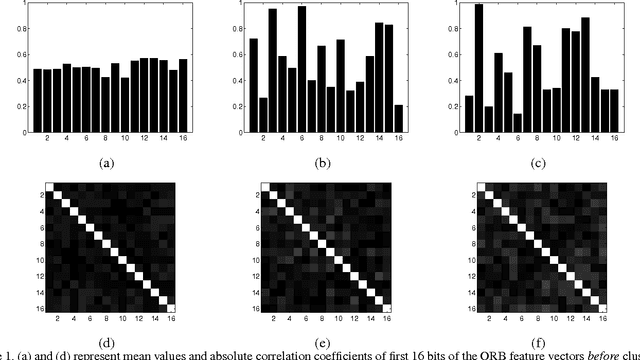

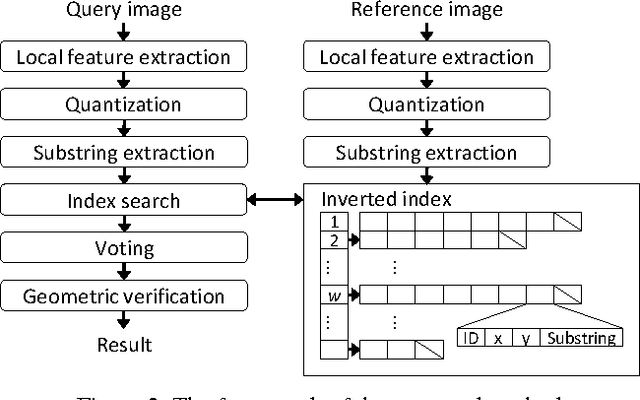

Abstract:In this paper, we propose a stand-alone mobile visual search system based on binary features and the bag-of-visual words framework. The contribution of this study is three-fold: (1) We propose an adaptive substring extraction method that adaptively extracts informative bits from the original binary vector and stores them in the inverted index. These substrings are used to refine visual word-based matching. (2) A modified local NBNN scoring method is proposed in the context of image retrieval, which considers the density of binary features in scoring each feature matching. (3) In order to suppress false positives, we introduce a convexity check step that imposes a convexity constraint on the configuration of a transformed reference image. The proposed system improves retrieval accuracy by 11% compared with a conventional method without increasing the database size. Furthermore, our system with the convexity check does not lead to false positive results.
 Add to Chrome
Add to Chrome Add to Firefox
Add to Firefox Add to Edge
Add to Edge